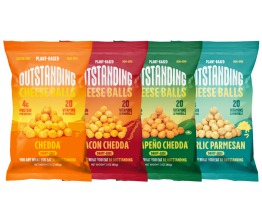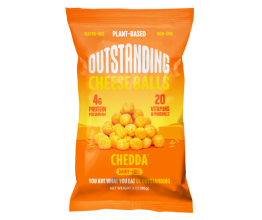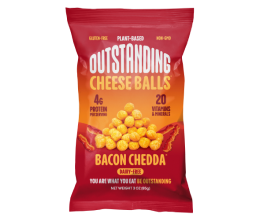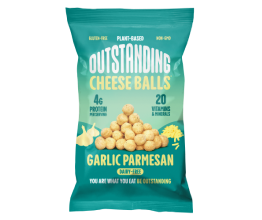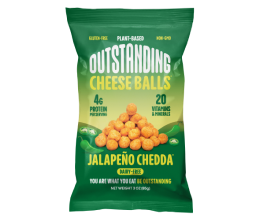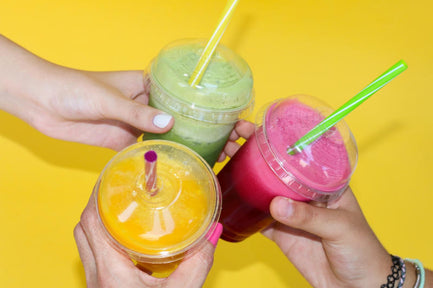Here's What the Non-GMO Label Means
Grab any snack off the grocery store shelf and you’ll see labels galore Some of them just tell straight facts about the contents of the bag or box – amounts of protein, fiber, or nutrients. Other labels are a little harder to read and require a bit of background knowledge to understand.
Multiple organizations and government bureaus get involved in the labeling process, and every country has its own rules. Some regulations even vary across state lines, so rules regarding labels may shift within a matter of miles.
One of the more controversial of the bunch is the non-GMO label, which indicates the absence of genetically modified organisms in the food. It’s not so simple, of course, so needless to say there are some things to keep in mind if you’ve made up your mind to avoid GMO foods.
In this article, we’re looking closely at the meaning of the non-GMO label, giving you some insight on the state of GMO food in general, and will offer some tips to help you keep GMO foods out of your fridge and off the table.
Whether you’re already familiar with GMOs or just curious about the subject, you’re bound to find learn something new, and hopefully make some smarter choices when it comes to food.
GMO Overview
According to the Non-GMO Project website, a GMO is a “plant, animal, microorganism or other organisms whose genetic makeup has been modified in a laboratory using genetic engineering or transgenic technology.”
Genetic modification is different from the traditional crossbreeding methods that farmers and ranchers have used for centuries to select for certain traits like the size, shape, resilience, and flavor for certain crops and livestock.
The objective of most genetic modification projects is to create crops that better withstand the application of herbicides and pesticides, among other physical and chemical traits. Advocates claim that GMOs are necessary to produce safe, affordable, and accessible food despite increasingly challenging natural conditions.
As agriculture grows bigger and more industrialized across the globe, we’re seeing more companies turn to GMO products in an effort to create more predictable and profitable products.
And while we still don’t have a scientific consensus on the safety of GMOs, there are many voices that suggest GMOs may not be so trustworthy.
Some say that due to a lack of funding and research – and pushback from biotechnology companies that advocate GMOs – we still lack certainty on the subject, and consumers are rightfully concerned about whether these products are safe in the long term.
Whether you choose to eat GMO foods is up to you, but we want to make sure that you know the full story about these products before you bring them home for you and your family.
As the Non-GMO Project puts it, more people are “choosing to opt-out of the GMO experiment” and aim to shed light on the practices going on behind the scenes.
GMO Label Laws Worldwide
Depending on where you are in the world, GMO verification labels will vary based on local laws. All of the countries in the European Union, for example, require that GMO foods are labeled before hitting store shelves. The same rules apply in Japan, Australia, and over 50 other countries, with more following suit each year.
In Canada and the US, however, GMOs are not currently labeled by law, although many third-party organizations take matters into their own hands and encourage companies to follow a verification process to protect consumers.
The Non-GMO Project is the largest and most widely trusted organization out there, allowing food companies to sign up and earn a label that assures customers seeking GMO-free foods.
The organization takes strict measures when testing products in all categories, going directly to the source materials and ensuring that the original ingredients are not genetically modified.
For example, if a brand wants to bring a new wheat cracker product to market and earn a Non-GMO label, they must allow for testing on the individual ingredients they use, rather than the processed final product. This is to prevent and GMO material from sneaking past the test.
There are other indications that the product contains no GMO, including the “100% Certified Organic” label more commonly found in the US and Canada.
Don’t confuse this with other “organic” labels that still allow 30% of the ingredients to be genetically engineered. If you want to avoid GMOs 100%, make no exceptions.
This goes for all food, not just bagged snacks and processed items. Butter, beef, and other animal products are subjected to the same tests, so apply these principles to your entire shopping cart if your goal is to get rid of GMOs from your diet.
As the Non-GMO Project and other organizations gain traction in the US and Canada, expect more transparency from food companies and broader legislation that informs consumers about GMO content in their products.
If you ever find yourself debating whether a product contains GMO ingredients, you also have the right to contact the manufacturer and find out the truth for yourself.
Foods Likely to Contain GMOs
Now that you know what to look for on labels and panels, it’s worth investigating which foods are most commonly subjected to genetic modification.
The Non-GMO Project has compiled the “high-risk” crops that should be on your radar as you navigate your grocery list. Corn, for example, has been heavily modified in the United States over the past several decades, with over 90% of crops testing positive for GMO inputs.
Other crops to look out for include alfalfa, canola (present in many vegetable oils), cotton, papaya, soy (a common filler ingredient in snacks), sugar beets, and certain types of summer squash and zucchini.
You might wonder why this list of crops is so short. The reason is due to the somewhat unsophisticated testing process that verifies levels of GMO, plus the fact that the testing standards are extremely strict.
Apples, eggplants, pineapples, and a few other fruits and vegetables are currently being tested more widely and will be the subject of greater focus in the next few years.
Things get a bit trickier when we move into the arena of animal products and their derivatives. Since a huge portion of animal feed is produced with GMO ingredients, it’s difficult to confirm whether meat, dairy, and eggs are indeed free of GMOs.
This means that you’ll need to dig deeper when browsing these sections at the store and make sure that your purchases are 100% certified organic once again. Grass-fed is your best bet when comparing steaks and ground beef, while chicken and pork are sometimes not so easy to discern.
Get as much information as you can from your grocer and air on the side of caution when selecting animal products of any kind, from yogurt and cheese to jerky and deli cuts.
More Tips to Avoid GMOs
We’ve given you a sense of what high-risk foods to avoid and some labels to look for, but there’s more to know about navigating the non-GMO landscape.
The first warning is about sugar. You probably already have sugar on your no-go list, especially the super-processed type found in soda, candy bars, and mass-produced pastries. These sugars are not only harmful to the body for their toxic chemical properties, but they’re also highly likely to contain GMO from sugar beets – one more reason to keep these products out of your cart.
Keep an eye out for words for ingredients like glucose, fructose, dextrose, caramel color, and anything in that family. Conventional products these days are loaded with these sweeteners and they can be hard to avoid, but if you’ve got to satisfy that sweet tooth, stick with 100% sugar cane or organic sugar.
We mentioned soy earlier, but it’s worth repeating: almost all soy is heavily modified in the 21st century. Steer clear of all derivatives as well, including soy isolate, protein, and supplements.
Finally, be aware of the foods you’re feeding to your babies and toddlers since many infant formulas and breakfast cereals contain modified corn starch and other unwanted ingredients. Spend a bit extra to get peace of mind with those organic labels.
Make Health Your Top Priority
It’s not a bad idea to avoid GMOs when possible, but remember that great overall health is the ultimate goal. Focus on eating real, minimally processed ingredients and try to keep your cart full of organic goods.
As far as snacks go, a non-GMO label doesn’t always equal a healthy product. Look for snacks that are high in protein like our Pig Out Pigless Pork Rinds, which are totally plant-based, free of GMOs, and downright delicious.
If old-school crunch is more your thing, you’ve got to try out Outstanding Puffs loaded with protein, nutrients, and flavor. Once again – GMO-free and a real crowd favorite.
Check out the Outstanding Foods mission to see what we stand for.
Conclusion
The GMO situation might be a bit fuzzy, but you’ve now got the knowledge you need to make informed decisions when you go to the store. Keep learning more, stay strong and healthy, and enjoy the food you eat every day.
Sources:
https://blogs.webmd.com/from-our-archives/20110323/how-can-you-avoid-genetically-modified-food
https://www.nongmoproject.org/gmo-facts/
https://www.downtoearth.org/environment/genetic-engineering/ways-to-avoid-genetically-modified-food
